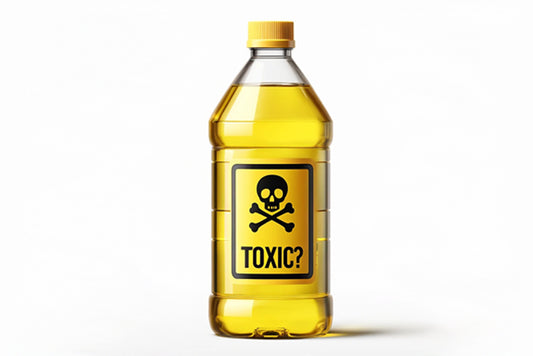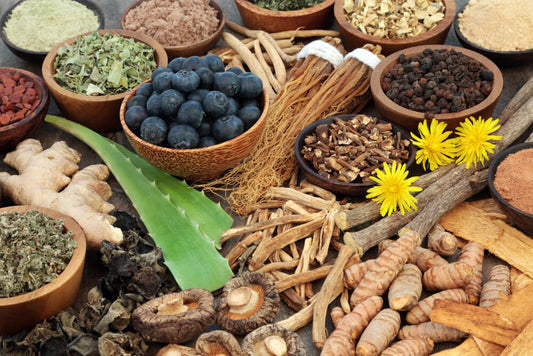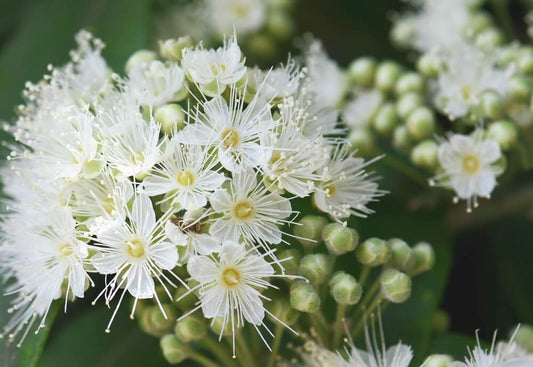
What Is Matcha? A Superfood-Lover’s Guide
If you’re a regular in cafes, there’s a good chance you’ve seen matcha on the menu. But if you’re yet to try anything matcha, or don’t know what it is really, then keep reading because in this piece, we’re going to tell you everything you need to know about matcha.
We’ll tell you all about how to make matcha the traditional way, why matcha is more than just a flavour, and why it must be widely regarded as a superfood. So, get ready for your match awakening.
What is matcha?
Matcha is a type of green tea that originated in Japan hundreds of years ago. It is made from harvested young and tender green tea leaves that are ground into a bright green fine powder and then whisked with hot water for consumption.
Unlike with the regular and more well-known type of green tea, wherein the leaves are steeped in hot water and then thrown away, with matcha, you’re drinking the entire thing. So, you’re getting every bit of nutrients as well.
Matcha was originally served only during traditional Japanese tea ceremonies. But with its popularity on the rise, thanks to its unique flavour and potential health benefits, matcha now has culinary variants that can also be used for cooking, baking and making smoothies and other beverages.
What’s the difference between green tea and matcha?
Matcha and green tea are like long-lost brothers that were separated at birth and lived two very different lives. Although they come from the same plant, there’s a world of difference between the two:
- Matcha has a stronger, more robust flavour than green tea. It can be described as slightly sweet, grassy, and slightly bitter. On the other hand, green tea has a milder and more astringent flavour.
- Matcha has a higher caffeine content than green tea. A typical serving of matcha contains about 70 mg of caffeine, while a serving of green tea contains about 35 mg of caffeine.
- Matcha also has a higher concentration of antioxidants than green tea since the whole tea leaf is consumed.
- Green tea leaves are usually steeped in hot water and then the leaves are thrown away, while matcha leaves are ground into a fine powder and then whisked with hot water to create a frothy, smooth drink.
- Because of the additional steps in producing matcha and the usage of higher-quality tea leaves, matcha is generally more expensive than green tea.

From farm to cup: How is matcha made?
Matcha comes from the camellia sinensis plant, which is the same plant where the green tea, oolong, and black tea that you love to brew or order, come from. The only difference between matcha, as we’ve mentioned earlier, is how it’s made.
Cultivation
The camellia sinensis plant, among its other variants, is cultivated mainly in Uji, Japan and Nishio in Aichi Prefecture.
What makes matcha farming unique is that before the harvest season in spring, the matcha plants are always grown under the shade. This is done with the help of the surrounding scaffolding or a structure of some sort, where straws are placed to protect the plants from sunlight. Some farmers also use nets or black vinyl sheets to cover the plants.
The shade increases the amount of chlorophyll and amino acids in the leaves, thus preserving the distinct flavour and giving the tea leaves their bright green colour. Exposure to sunlight for long periods may leave a bitter taste in the matcha, which is not ideal.
Harvesting
To produce the highest grade matcha, only the young tender leaves get picked from the plants that are only harvested only once a year. However, it doesn’t mean that all matcha is one and done. Some matcha producers do a second harvest which is often called the “second flush” and some farmers even create up to third flushes.
Drying
Unlike other types of tea, matcha leaves are not dried under the sun. They are steamed in large cages and are thrown in the air by heated blowers. This drying process preserves the colour and nutrients of the matcha.
They then undergo a process called destemming and deveining to filter out the unnecessary parts and leave only the finest parts to make matcha.
Grinding
Matcha literally means “ground tea” in Japanese. And this grinding stage is what separates it from other popular teas in the market.
The dried matcha leaves are ground into a fine powder using a granite mill called the “ishi usu”. The leaves are placed on the stone wheels and are rotated very slowly and gently by hand. This rotation process is what transforms the leaves into a fine powder, which takes more than an hour to grind just 30 grams of matcha.
Different Grades of Matcha
As we all know, Japanese people love to make everything perfect. That’s why matcha is always graded according to the quality of leaves, making process, and application.
There are two main grades of matcha: ceremonial and culinary. Here’s how they differ from each other.
Ceremonial grade
This is the highest quality matcha, made from the youngest tea leaves that are hand-picked and stone-ground into a fine powder. This is where there’s a higher concentration of nutrients for a higher-quality tea.
Ceremonial-grade matcha is known for its vibrant green colour, smooth texture, and rich, complex flavour. Basically, the greener the matcha is, the more expensive it’s going to be. That’s why it’s reserved only for traditional tea ceremonies and is best enjoyed on its own, without any added sweeteners or milk.
Culinary grade
This is the most commonly used grade of matcha. This type of matcha is made from the more mature and less delicate tea leaves that are harvested later in the season.
Culinary-grade matcha has a slightly less vibrant green colour and a slightly more bitter taste than ceremonial-grade matcha. However, it’s not low quality by any means. It’s just used differently, mainly in cooking and baking, where its flavour can be balanced with other ingredients and is also used in other beverages.
Culinary grade matcha is divided into 5 subgrades, depending on how many delicate leaves were used in making the matcha
Premium culinary grade matcha – This is the highest quality culinary grade matcha, with a slightly sweeter and smoother taste compared to other subgrades. It is typically used in recipes where matcha is the primary flavour.
Cafe grade matcha – This grade of matcha is less expensive and has a slightly bitter taste. It is the best grade that you can use for smoothies, lattes, and other coffee blended drinks. You can also use it for cooking and baking because it retains that signature jade-green colour.
Ingredient grade matcha – This grade is slightly thicker in consistency than the previous grades so it is ideal in recipes that also involve dairy products like buttercream and ice creams like sauces and desserts.
Kitchen grade matcha – This grade probably has the lowest amount of delicate leaves and has a thicker consistency than the previous grades. It’s also darker in colour which is why it’s perfect for large-scale food production. If you see matcha goodies in your nearby grocery store, it probably has kitchen-grade matcha in them.
Classic grade – classic grade matcha offers a good quality tea that boasts a fine texture and bright green colour. It has a robust and unique flavour, with a slight bitterness and creamy notes. However, it’s a more affordable option compared to the premium and café grades, making it an ideal choice for matcha enthusiasts.
Nutrient Profile of Matcha
When drinking matcha, you’re essentially drinking the leaves that are concentrated in nutrients, compared to brewed tea where much of the nutrients are only thrown away. And that is what truly sets matcha apart from other types of tea.
A single teaspoon of matcha powder contains:
- Calories: 7
- Calcium: 6mg, 1% of the daily value
- Iron: .28mg, 1% of the daily value
- Catechins – these are antioxidants that may help protect against chronic diseases such as heart disease and cancer.
- L-Theanine - matcha also contains the amino acid L-theanine, which has been shown to promote relaxation and reduce stress.
- Caffeine – matcha has a higher caffeine content, which can help improve mental alertness and concentration.
- Vitamins and minerals – matcha also contains small amounts of several vitamins and minerals, including vitamin C, selenium, chromium, zinc, and magnesium.
Health Benefits of Matcha
Regular green tea has been considered one of the healthiest beverages that you can drink on the planet. And since matcha has significantly more nutrients than green tea, there’s no way matcha isn’t in the same tier as well, right?
Below are only some of the health benefits of matcha to help make its case.
Helps reduce the risk of chronic diseases
Since matcha is rich in antioxidants, specifically catechins, it may help protect you against damage from free radicals and reduce the risk of chronic diseases such as heart disease.
May Improve brain function
Matcha contains more caffeine than green tea (18.9 to 44.4 mg of caffeine per gram), which can help improve mental alertness and concentration. But don’t worry, it won’t make you jittery as a cup of coffee would.
Additionally, it also contains the amino acid L-theanine, which has been shown to promote relaxation and reduce stress levels.
May lower cholesterol
Some studies have shown that consuming green tea may help reduce levels of LDL (bad) cholesterol, which can lower the risk of heart disease and stroke. And since matcha has the same nutrient profile as green tea, this time only better, matcha is regarded to be a must-have in a well-rounded diet to keep your heart healthy.

How to make matcha tea at home
If you’re indulging in matcha lattes and matcha-flavoured doughnuts pretty regularly, you’ll enjoy making your own matcha tea at home. Here’s how:
You will need:
- Matcha powder
- Bamboo whisk (chasen)
- Bamboo scoop (chashaku)
- Matcha bowl (chawan)
- Hot water (not boiling)
Instructions:
- Heat water in a kettle or pot, but make sure it’s not boiling. The ideal temperature for matcha is around 80-85°C.
- While the water is heating, prepare the matcha powder. Use the bamboo scoop to measure out 1 teaspoon (2 grams) of matcha powder and sift it through a fine mesh sieve to make sure there’s no clumping.
- Pour the hot water into the matcha bowl to warm it up. Then pour the water out and dry the bowl with a clean cloth.
- Add the sifted matcha powder to the bowl.
- Pour about 2-3 ounces (60-90 ml) of hot water over the matcha powder. Be careful not to use boiling water as it can burn the matcha and affect its taste.
- Using a bamboo whisk, whisk the matcha and water together until it forms a smooth and frothy mixture. Move the whisk in a quick back-and-forth motion until the mixture is fully blended and the surface is covered with a layer of fine foam.
- Enjoy your matcha tea right away! It's best to drink it while it's still hot and frothy.
Pretty easy, right? Make this regularly and you’ll feel the health benefits that matcha brings to the table.
So, is matcha a superfood? Our take
While you rarely see matcha in lists of superfoods posted online, it certainly deserves a spot. It’s rich in nutrients needed by the human body, it has numerous health benefits, and not to mention it looks and tastes great, so why wouldn’t it be one?
So, if you consider yourself a superfood lover and don’t have matcha powder in your collection yet, this might be the time to experience a second superfood awakening. Grab one of our Japanese Premium Grade Matcha tea and other super teas and include them in your stash.
We offer FREE Australia-wide shipping for orders above $100! We also accept Afterpay, ZipPay and Lay Buy for your convenience.













